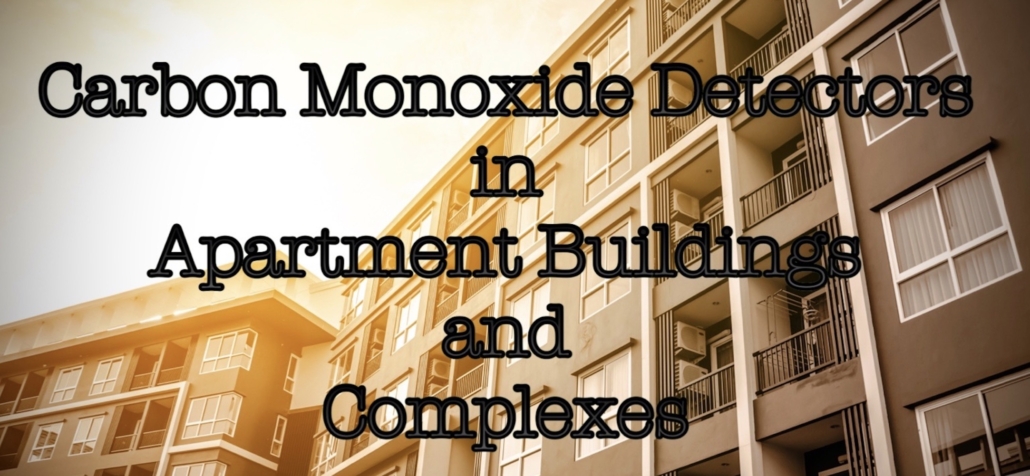Ames Iowa Apartment Carbon Monoxide Evacuation
Carbon monoxide alarms prevents worse apartment carbon monoxide poisoning in Ames, Iowa, enabling an evacuation of 56 units before it was too late.
By Rebecca Martin
On Sunday afternoon, August 6, 2023, an apartment building in the 4700 block of Mortensen Road in Ames, Iowa was evacuated by Ames fire crews responding to a carbon monoxide alarm from one of the apartments. The Ames Fire Department discovered high levels on the scene and all 56 units were safely evacuated. One person was treated by paramedics on the scene. The source of the carbon monoxide was a broken vent pipe on one of the boilers. Once the vent pipe was repaired by maintenance, tenants were able to return to their homes. https://whoradio.iheart.com/content/2023-08-07-56-unit-apartment-evacuated-in-ames-due-to-carbon-monoxide-leak/

Disaster was averted in an Ames, Iowa apartment carbon monoxide incident when the CO alarms sounded, allowing for a safe evacuation of 56 units.
This was not the first carbon monoxide scare at an Ames apartment building in recent years. In May of 2022, the Ames Fire Department responded to 2700 Lincoln Way to the report of a sounding carbon monoxide detector. They discovered a construction crew operating “gas-powered equipment” inside the first floor of the building. 75 residents were safely evacuated.
In both of these cases carbon monoxide detectors were present and emergency crews were able to evacuate the premises without loss of life. This is not always the case.
In May of 2022, a 128-unit apartment building at 1001 University Avenue in Madison, Wisconsin was evacuated after potentially lethal levels of carbon monoxide had been discovered. The source of the carbon monoxide was a carpet cleaning service van that had been running for several hours outside a stairwell door. Two people were assessed on the scene by paramedics and released. https://www.cityofmadison.com/fire/daily-reports/apartment-building-evacuated-after-dangerous-levels-of-carbon-monoxide-detected-inside
Upon inspection of the building, it was learned that some residents had removed the batteries from carbon monoxide detectors and discarded the units in the hallway, suggesting that the detectors might have been sounding previously.
In June 2023, Houston, Texas firefighters responded to a report of a carbon monoxide death at the Vintage Apartments at 6500 West 43rd. Six people were transported to the hospital and a seventh person was pronounced dead at the scene. A portable generator was found in use in the apartment. At the time of the incident, the power was out to the complex due to storms. The manager said that carbon monoxide detectors were not present because the stoves at the complex were electric and that hotel rooms had been offered to residents during the power outage. Investigators said that the carbon monoxide likely spread to other units and made others sick. https://abc13.com/carbon-monoxide-death-use-generator-inside-vintage-apartments-w-43rd/13418772/
Every year, more than 400 people in the United States die from carbon monoxide poisoning. 14000 people are hospitalized. Approximately 50,000 receive evaluation and care in an emergency room. The numbers are likely to be much higher as we improve our data collection methods, hospital reporting and proper diagnosis. Apartments and apartment complexes are at risk for carbon monoxide poisoning.
Because carbon monoxide can be present anywhere that fuel-burning assets are in operation and due to the typical construction of apartment buildings and complexes, the source of potential poisoning often comes from a common boiler used to heat the units. But poisoning can come from other sources such as hot water heaters, appliances, gas fireplaces and pool heaters in complexes with an outdoor pool. Carbon monoxide can also be produced by cars left running in attached garages or garages situated below the residential units. And as we have seen, carbon monoxide can be produced by improperly ventilated equipment used by service companies maintaining the premises. Just because appliances in the individual units are electric does not mean that carbon monoxide might not be produced from other sources.
In most states, carbon monoxide detectors are required in any place where people reside. In some of these states, carbon monoxide detectors are required only in homes with fuel burning appliances. Hawaii, Indiana, Kansas, and Missouri do not have a state law requiring carbon monoxide detectors. Some states require that all new construction have a hard-wired carbon monoxide detector with a battery backup. In other cases, city or county ordinances determine whether a carbon monoxide detector is required.
A list of states carbon monoxide detector requirements is available at
https://ipropertymanagement.com/laws/carbon-monoxide-smoke-detectors#state-monoxide
As a renter it is important to have a carbon monoxide addendum included in the lease agreement which verifies that carbon monoxide detectors have been installed in compliance to state law in those states which have carbon monoxide detector legislation. https://rentprep.com/blog/legal/carbon-monoxide-detectors-rental-property/ Tenants may be asked to agree to change batteries as needed and not to tamper with or remove carbon monoxide detectors that are in place. While tenants can be informed of their responsibilities in regard to replacing batteries during the move in process, ultimately a landlord should make it a habit to check carbon monoxide detectors during maintenance check-ins or property inspections.https://www.avail.co/education/articles/are-landlords-required-to-provide-smoke-and-carbon-monoxide-detectors
“Landlords are typically required to install working detectors in rental properties and replace once faulty — especially since both smoke and carbon monoxide detectors need to be on at all times. If a smoke or carbon monoxide detector is no longer working properly, most landlords replace the detector as best practice.” https://www.avail.co/education/articles/are-landlords-required-to-provide-smoke-and-carbon-monoxide-detectors
What can a tenant do if a landlord refuses to install and maintain a carbon monoxide detector?
“Many states have established laws requiring carbon monoxide detectors in any residence and some specifically mention that landlords are responsible for installing and maintaining them. There are penalties for neglecting to install detectors, from fines to more serious charges in certain instances.” https://rentprep.com/blog/legal/carbon-monoxide-detectors-rental-property/#:~:text=Many%20states%20have%20established%20laws,serious%20charges%20in%20certain%20instances.
For more information on how carbon monoxide poisoning occurs in apartment buildings and apartment complexes, check our blog entitled:
FAQ: Carbon Monoxide Poisoning in Apartment Complexes, How Does It Happen?

Leave a Reply
Want to join the discussion?Feel free to contribute!